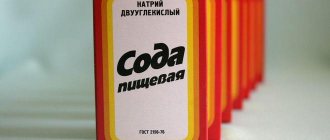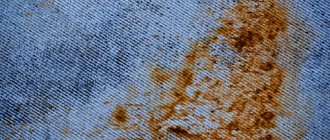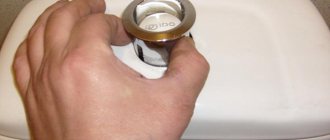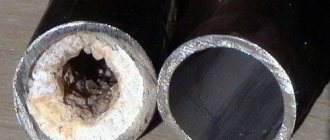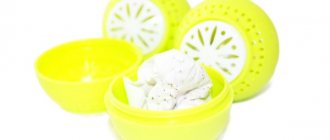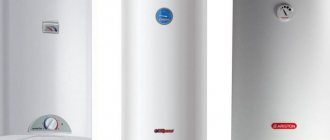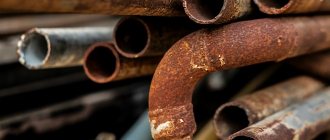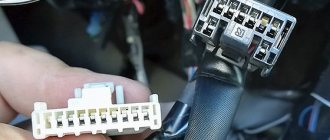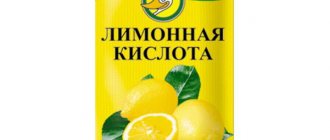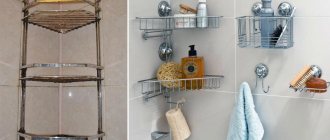Rust does not paint any surface... unless, of course, the owners of the house take a strange look at every flaw and notice something interesting and alluring in it. In order to clean traces of corrosion (and rust is precisely its result), it is worth using the VSN-1 rust neutralizer.
Release form and principle of operation
The rust neutralizer is produced in the form of a liquid, poured into containers of various sizes, most often 0.5 and 1 liter, but there are also options when the VSN 1 composition is offered to customers in a 5 liter canister, but this is rare.
Before talking about the action of the substance itself, let’s make a short digression and remember the school course in inorganic chemistry. In general, rust in everyday life is any product of contact of iron with oxygen in the presence of water or air. In other words, rust is most often iron oxide. Let us also mention that this is only a general concept, and therefore not every iron oxide is rust, this word means the result of corrosion.
Iron oxide is amphoteric, i.e., those that are capable of exhibiting the properties of both acids and bases. This is why the composition of VSN 1 enters into a neutralization reaction with rust: chemistry is the science of opposites, therefore acids neutralize bases, i.e. alkalis.
Manufacturers do not provide a detailed list of substances used in the manufacture of the neutralizer, but inquisitive people conducted an analysis and found that, most likely, the composition includes sulfuric or hydrochloric acid (in other words, a “strong”, aggressive acid), which dissolves rust and makes it subject to removal. In addition, sometimes manufacturers also use orthophosphoric acid along with one of the mentioned acids. Be that as it may, you need to use the neutralizer with caution, do not inhale its vapors and cover exposed skin when working.
We recommend: How to make fabric softener for your washing machine yourself?
The main difference is the mechanism of action
The rust converter creates a protective layer on the surface. The rust itself doesn't go away. It turns (transforms, hence the name “converter”) into other chemicals, which make up the protective layer. On top of it you can apply paints and other building mixtures for metal processing.
The neutralizer has a different operating principle. It “uncovers” rust, which can be completely removed from the metal surface. Essentially, a rust neutralizer is a type of converter. Its full name is Rust Removal Converter.
Instructions for use
We decided that it would not be amiss to also post instructions on how to use the rust neutralizer, since, unfortunately, there are no practical tips on the bottles.
- The first step is to determine how bad everything is: the area of the affected surface, the height of the rust, check whether it is peeling off.
- Then, if the rust does flake off, try to remove it with a wire brush or sponge, if you have something like that.
- After this, you can try applying a neutralizer.
Advice
The best thing to do is pour the liquid onto a scrap rag and place it on the rust. Before doing this, of course, it is important not to forget to put on gloves.
- After some time, you can check the result. If the reaction proceeds as required, all rust will be washed off from the affected surface. If not, it’s worth trying again, especially if the poured composition simply wasn’t enough.
Mode of application
- Firstly, all dirt must be removed from the surface being treated.
- Secondly, the wet surface is treated, without necessarily removing the old coating, which adheres well.
- Thirdly, a neutralizer is applied to the rust spots with a brush.
- Fourthly, half an hour after application, the damaged surface is simply treated with water, dried and prepared for painting.
NOTE: The main cause of rust, in addition to a humid climate, is a violation of the recommended storage conditions. A garage or any other room in which tools or equipment with metal parts are located most of the time must be well ventilated, and then the occurrence of corrosion will be minimized.
What do consumers say?
But in theory, it is impossible to be convinced of the good (or, on the contrary, bad) properties of the VSN 1 composition, so many of us tend to look for real reviews on the Internet. In order to make the task easier for our readers, we ourselves have read many publications of ordinary people, and now we can say with confidence that the majority of users of the Russian-speaking segment of the World Wide Web praise the neutralizer for its effectiveness and profitability (as of the end of May 2021, a 0.5 liter bottle of the composition can be purchased for 40-60 rubles, which, of course, is very cheap - in Moscow, for example, even travel costs more). However, these same people argue that behind the effectiveness lies aggressiveness and unsafety: the neutralizer is fire hazardous, can damage the mucous membrane when inhaling vapors, and generally requires careful handling. True, the low price and efficiency still cover these disadvantages, which are invisible when handling the liquid properly.
We recommend: How to replace nail polish remover?
Let's sum it up
So, rust converters are different. Some, as a result of a chemical reaction, create a protective film on top of which paint can be applied. Others also transform rust, but thereby “swell” it. Therefore, the rust can be washed/wiped off and removed from the surface. This second type of converter is often called a rust neutralizer.
If the neutralizer contains corrosion inhibitors, then after removing the rust, a thin protective layer remains on the surface of the clean metal. That is, the neutralizer not only removes rust, but also increases the corrosion resistance of the metal.
Safety of treated surfaces
We are talking about an aggressive product, which means it is worth mentioning precautions. Thus, one should not neglect the danger of car polish or bathtub enamel dissolving under the influence of “strong” acids in the solution. Simply put, we strongly advise you to carefully monitor how long the hero of our today’s article is in contact with the surface.
We hope that our material was useful for you, you learned something new and interesting for yourself and, perhaps, have already decided that on your next trip to the hardware store you will definitely buy a bottle of VSN-1 rust neutralizer so that it is always available hand. Let the metal surfaces in your home always sparkle and delight with their pristine beauty, and let rust bypass them seven ways: if anything happens, it will face certain death in the form of a neutralizer.
General information
If you intervene in this process in time, it is quite possible to reverse it with the help of a product better known as a rust neutralizer. In the early stages, the effects of corrosion can be eliminated very quickly and the treated area will appear undamaged. If the case is advanced, it is of course possible to get rid of rust, but it will take much more time and effort.
There are many remedies that help cope with such consequences, but in our country the most famous are products under the names: VSN 1, astrochem and yaskhim. They are easy to find on sale in several popular volumes: 250 ml, 0.5 l and one liter.
The main advantages of the neutralizer
Considering the wide spectrum of action of this product, we can highlight the main advantages that make the rust neutralizer popular among buyers:
- Low price . This point is especially pleasant, because in our climatic conditions we have to resort to using this product quite often. You can buy a neutralizer at almost any hardware store.
- Safe composition . The product does not contain flammable or toxic substances.
- Economical. The product is quite easy to apply and requires minimal consumption.
- Efficiency. The neutralizer eliminates even old corrosion, thanks to its ability to penetrate deeply into the pores.
- Versatility. Can be used as a stand-alone coating and does not require any pre-treatment of the surface.
- Convenience. It dries almost instantly and at the same time significantly increases the service life of the treated products.
Application area
One of the most extensive areas of application for this product is closely related to automobiles. Machines are most often subject to corrosion, and those that are not used regularly are especially vulnerable to it. When the body or its individual parts are being prepared for painting, the lion's share of the time is spent on removing corrosion. A rusty coating very quickly appears on chips of the paintwork, scratches and other damage; salt mixtures on winter roads also have a negative effect on the car.
IMPORTANT: There is a widespread misconception that the best protection for a car is a garage, but there are several caveats. If your garage feels damp, then the likelihood of rust will be many times higher than if the car is outdoors.
In construction, neutralizers are also widely used. Metal fences, poles, and hangars are at risk, but water pipes most often suffer from corrosion.
In everyday life, these products are used less often; rust mainly appears on garden tools and tools, but this can be avoided by following a number of simple rules.
Purpose and differences from converters
A neutralizer is sometimes confused with a rust converter, but these products differ not only in their purpose, but also in their composition.
The neutralizer is capable of stopping the processes started by corrosion and reduces the emerging rust to neutral elements; how it works can be described in three stages:
- The structure of the plaque becomes porous, which is what makes it easier to remove rust from surfaces
- The treated surface becomes even
- Rust breaks down into neutral components and completely dissolves
The rust converter, even based on the name, does not destroy, but only converts the products that appear during corrosion into an anti-corrosion film.
Rating of the best rust converters
Even modern paints are not able to fully prevent the occurrence of rust on metal, resulting in the need to use corrosion neutralizers. The list of the best converters takes into account their advantages and disadvantages, according to customer reviews.
“Yashim” is an aqueous composition of acids, and the main purpose of this domestic product is to neutralize foci of corrosion to prepare the car for painting. After treating the area, the surface must be rinsed well with running water. The average cost of the product is 36 rubles.
- low cost;
- allows you to process any type of metal;
- prevents rust from reoccurring;
- The paint adheres well to the treated surface.
- low processing speed.

